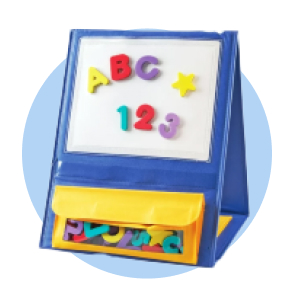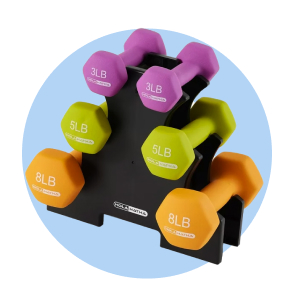
Turning a No into a Next Step: Solving Common Small Business Challenges
How to identify & resolve challenges
It’s bound to happen sooner or later. That “yes” you expected turns out to be a “no.” It could be from a client, a distributor or a member of your own team.
While hearing “no” might seem like a setback, the reality is that many obstacles are actually opportunities. Learning how to view them as a catalyst for growth and development is the key to turning that “no” into the next step.

Types of roadblocks you may encounter
There are nearly limitless numbers of challenges small businesses may face, but these are some of the most common.
Hiring the wrong person
Hiring for any position can be stressful, especially when your team is small. Every team member must pull their weight, sometimes performing two or more functions. This makes it critical to find the right person for the right job.
Unfortunately, we can’t read the future. It’s hard to know how well a person will actually fit into their role, or with the rest of your team, until they’re hired. This means it’s possible to hire someone who turns out not to be a good fit. It’s not anyone’s fault; it just happens.
Losing a team member
Losing a team member can be difficult, especially if you’ve invested time and energy into training and developing them. But the reality is that people have their own individual needs. There could be any number of reasons why a person feels they need to leave your organization.
According to Indeed, the top reasons a person may choose to leave their job include needing more of a challenge, wanting a higher salary and feeling uninspired.
Part of managing a team means keeping an eye on each team member’s professional development. You want to ensure each person on your team has a clear path forward and objectives to meet in order to advance. But sometimes, that’s just not possible, and a team member may feel they need to leave your team in order to continue their career.

Losing a client
Few things hit harder than losing a client, especially in a small business. With fewer clients overall, the loss of even one can be a heavy blow. There are a lot of reasons why you might lose a client, and it’s not always something you can control.
According to client relationship consultant and author Andrew Sobel, the reasons you might lose a client include executive turnover at your client’s company, no longer needing your services, budget tightening, or “client fatigue,” a situation that arises when a client feels like a relationship has gone on too long.
There are also reasons you might lose a client that you can control. These include delivering work that doesn’t meet their standards, a decline in their trust in you and the fact that you might be taking the client for granted. Generally, if you’re not giving your best all the time, every time, your clients might notice and the relationship will start to fade.

Reputation loss
In the world of customer reviews and social media, reputation can be a difficult thing to manage. When seemingly a single bad review can destroy your organization’s reputation, you have to be mindful of every interaction.
According to Investopedia, reputation damage occurs as a direct result of the actions of your company, indirectly through the actions of one or more of your team members or through the actions of tangential associates of your company, such as investors or partners.
Some reputational damage is easily contained. Turn around negative reviews by replying to them quickly and earnestly. Sometimes, reaching out to reviewers directly and offering to make things right can lead to a positive upswing in your reputation. In other instances, though, it may take longer to repair the damage.
Low cash flow
Low cash flow can be one of the more dangerous setbacks to a small business. Without sufficient cash flow, it’s difficult to pay vendors, maintain payroll and keep your inventory stocked. Low cash flow can also prevent your business from capitalizing on growth opportunities.
According to FocusCFO, some of the problems with low cash flow can be hard to see. Since many businesses focus on their balance sheet, tracking income and expenditures, they may miss challenges with their cash flow. Whereas a cash flow statement can give you a clearer picture of the amount of liquidity your business has to work with.
Here’s how to move forward
As a small business owner, facing numerous challenges can easily lead to feelings of powerlessness. But there are tangible actions you can take that will improve your chances for success.
Adopt a growth mindset
One key to overcoming the challenges you face as a business owner is adopting a growth mindset. According to Harvard Business School, a growth mindset is the belief that ability and intelligence can be achieved through effort. Instead of believing that you can’t do something because you lack the experience, try to believe that you can develop the experience if you apply yourself.
With a growth mindset, you can learn to see obstacles as opportunities for growth and learning, and believe that you can truly improve your abilities and skills to avoid similar challenges in the future. If you’ve adopted the mindset, a setback doesn’t mean the end. It’s simply a chance for you to demonstrate that you can learn from failure. Failure becomes a data point for achieving future success.
Learn from your mistakes
Everyone makes mistakes. And, if the statistics can be believed, small business owners make plenty of them. The trick to overcoming those mistakes isn’t necessarily avoiding them or pretending they didn’t occur, but acknowledging them and learning from them.
According to Masterclass, the key to learning from mistakes starts with acknowledging them in the first place. Before you can learn from your mistake, you have to admit that you made one.
Then, it’s time to start thinking about mistakes as lessons, not failures. Take an honest look at what went wrong, and, most importantly, why. If you’re having trouble pinpointing what went wrong, ask for help to identify the lesson you can learn.
Once you’ve identified where you can improve, take what you’ve learned about the mistake and apply it to learning how to avoid a similar mistake in the future. Put those lessons into practice. Depending on the gap in your knowledge or skills, you may need to take a class or practice a new skill.
Create a plan to address the gaps in your knowledge or skills. Set reasonable and achievable goals, and track your progress toward them. That way, you can celebrate your milestones along the way to becoming a better, more capable business owner. Most importantly, though, you have to do the work to improve.
Walmart Business can help
Let us take some things off your plate. With a free Walmart Business account, you can subscribe to automatic deliveries to keep supplies coming on schedule.1 And with multiple users, you can delegate ordering to make your job easier.
Already have an account? Join Walmart Business+ to save over $500/year and enjoy exclusive rewards for your organization.2 Plus enjoy features such as free shipping with no minimum purchase,3 free delivery from a store4 and 2% in rewards on Walmart Business purchases.5


Limited-time offer
Unlock your special promo code
Stay informed on Walmart Business news & get $20 off a $100 purchase!1
1Minimum order of $100. Promo code can be used one time & may not be combined with other offers. Offer not transferable & void where prohibited by law. Customer responsible for all applicable taxes. Offer expires 12/31/2025 at 11:59pm PT. Further restrictions apply. See terms at checkout for details. Promo code offers available in limited quantities. While supplies last.
1 Shipping, delivery and minimum order fees may apply. Eligible items only. Terms apply.
2 Savings based on 1 free delivery $35+ order vs. $9.95 fee and 1 free shipping order under $35 vs. $6.99 fee biweekly, plus 2% Walmart Business rewards on monthly order >$250 (average value of $400).
3 Excludes most marketplace items. Freight & location surcharges may apply.
4 $35 minimum. Restrictions apply.
5 Earn 2% in Walmart Business Rewards on orders $250 or more. Exclusions apply. See full terms.
Exciting news awaits
Hear firsthand about new products, features & promotions.
By clicking submit, you agree to receive emails about Walmart Business and acknowledge you have read and agreed to our Terms of use and Privacy Policy.











